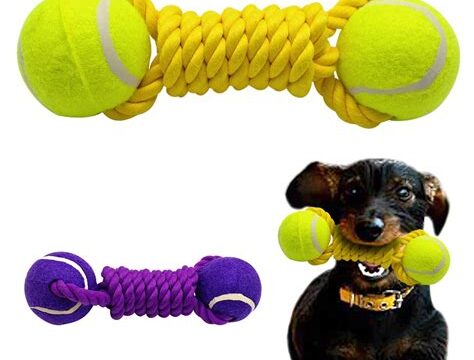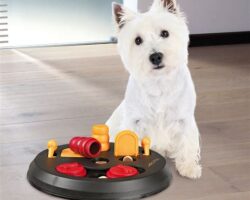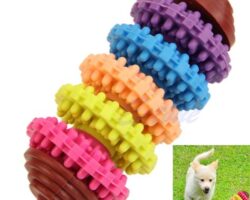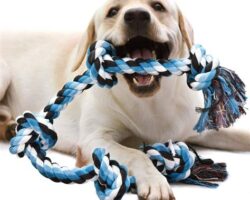Learn how to choose the right toy and develop your dog’s retrieval skills with positive reinforcement. Avoid common mistakes and keep your dog’s interest with toy rotation.
Choose the Right Toy
Choose the Right Toy
When it comes to choosing the right toy for your dog, it’s important to consider their preferences and play style. Some dogs may prefer plush toys that they can cuddle with, while others may enjoy interactive toys that challenge their problem-solving skills. It’s also important to consider your dog’s size and chew strength when selecting a toy, to ensure it’s safe and durable.
Another factor to consider when choosing a toy for your dog is their age and breed. Puppies may enjoy teething toys to soothe their gums, while adult dogs may prefer toys that cater to their natural instincts, such as retrieving or tug-of-war. Different breeds may also have different toy preferences, so it’s important to consider your dog’s specific needs and tendencies.
Lastly, it’s important to rotate your dog’s toys regularly to keep them engaged and excited about playtime. Introducing new toys and swapping them out every few days can prevent boredom and keep your dog mentally stimulated. By understanding your dog’s preferences and providing a variety of toys that cater to their individual needs, you can ensure they have a fun and enriching playtime experience.
Understanding Your Dog’s Preferences
Understanding Your Dog’s Preferences
Dogs, like humans, have their own unique preferences when it comes to toys. Some dogs may prefer squeaky toys, while others may enjoy chasing balls or playing tug-of-war. Understanding your dog’s preferences can help you choose the right toys to keep them engaged and entertained.
One way to determine your dog’s preferences is to observe their behavior during playtime. Pay attention to which toys they gravitate towards and how they interact with them. Do they seem more excited about certain toys? Do they lose interest quickly in others? By paying attention to these cues, you can gain insight into what types of toys your dog enjoys the most.
Developing Retrieval Skills
When it comes to developing retrieval skills in your dog, it’s important to understand their natural instincts and preferences. Dogs are natural hunters and retrievers, so it’s essential to tap into these instincts when training them. Use toys that are designed for retrieving and encourage your dog to chase after them.
Positive reinforcement is key when it comes to teaching your dog retrieval skills. Whenever your dog successfully retrieves a toy, be sure to praise and reward them. This will encourage them to continue practicing this behavior and improve their retrieval skills over time.
It’s also important to rotate your dog’s toys to keep them engaged and interested in retrieving. Introduce new toys and gradually increase the difficulty level to challenge your dog and help them develop their retrieval skills. By following these tips, you can help your dog become a skilled retriever and have fun in the process!
Teaching the Fetch Command
Teaching the Fetch Command
Teaching your dog the fetch command can be a fun and rewarding experience for both you and your furry friend. Not only does it provide mental stimulation and physical exercise, but it also strengthens the bond between you and your dog. When teaching the fetch command, it’s important to be patient and use positive reinforcement to encourage your dog’s learning process.
One of the first steps in teaching your dog to fetch is to select the right toy. Choosing a toy that your dog enjoys and finds motivating is crucial in this process. It’s important to understand your dog’s preferences and select a toy that they will be excited to chase and retrieve. Whether it’s a ball, frisbee, or rope toy, make sure to choose a toy that your dog finds appealing and fun to play with.
Once you have the right toy, begin by engaging your dog in a game of tug-of-war or simply tossing the toy a short distance away. When your dog shows interest in the toy, use the fetch command (fetch or get it) and encourage them to bring the toy back to you. When they retrieve the toy, be sure to praise and reward them with treats or verbal praise. Repeat this process consistently and gradually increase the distance at which you throw the toy, providing plenty of positive reinforcement along the way.
Using Positive Reinforcement
When it comes to training your dog, positive reinforcement is a method that has been proven to be effective in teaching new behaviors and commands. This approach involves rewarding your dog for good behavior, rather than punishing them for bad behavior. By using rewards such as treats, toys, or praise, you can encourage your dog to repeat the behavior you want them to learn.
Positive reinforcement is based on the principle of associating good behavior with a positive outcome, which can help to strengthen the desired behavior over time. For example, when teaching your dog to fetch a toy, you can use treats to reward them every time they successfully retrieve the toy and bring it back to you. This will help to reinforce the behavior and increase the likelihood of them doing it again in the future.
It’s important to be consistent with your use of positive reinforcement and to reward your dog immediately after they perform the desired behavior. This will help them to understand the connection between their actions and the rewards they receive, making it more likely that they will continue to exhibit the behavior in the future. By using positive reinforcement techniques, you can effectively train your dog to retrieve toys and engage in other desired behaviors in a positive and rewarding way.
Avoiding Common Mistakes
When it comes to playing fetch with your dog, there are a few common mistakes that many pet owners make. One of the biggest mistakes is using the wrong type of toy. It’s important to choose a toy that is durable and safe for your dog to retrieve. Avoid toys that are small enough for your dog to swallow, or toys that can easily break apart and become a choking hazard. Choosing the right toy is essential for a safe and enjoyable game of fetch.
Another common mistake is not properly teaching the fetch command to your dog. It’s important to take the time to train your dog to understand and follow commands when playing fetch. Without proper training, your dog may not understand what is expected of them, which can lead to frustration for both you and your pet. Patience and consistency are key when teaching the fetch command.
Finally, many pet owners make the mistake of not rotating toys for extended interest. Dogs can quickly become bored with the same toy, so it’s important to regularly introduce new toys to keep the game of fetch exciting. By rotating toys, you can keep your dog engaged and prevent them from losing interest in the activity. Avoiding these common mistakes will help ensure that you and your dog have a rewarding and enjoyable experience when playing fetch.
Rotating Toys for Extended Interest
Dogs, like humans, can easily become bored with the same toys day after day. To keep your furry friend engaged and interested in playtime, it’s important to rotate their toys regularly. By introducing different toys on a regular basis, you can keep your dog mentally stimulated and prevent them from losing interest in their playthings.
When selecting toys to rotate, it’s essential to consider your dog’s preferences and play style. Some dogs may prefer squeaky toys, while others may enjoy tug-of-war or fetching toys. By understanding your dog’s preferences, you can rotate toys that are sure to capture their interest and keep them entertained for longer periods.
Additionally, rotating toys is a great way to introduce new challenges and keep your dog’s playtime fresh and exciting. Whether it’s a new texture, shape, or interactive toy, regularly switching up your dog’s playthings will keep them engaged and prevent boredom. This simple strategy can also help extend the lifespan of their toys, as they won’t become worn out from constant use.
Frequently Asked Questions
What are the best dog toys for fetching and retrieving?
The best dog toys for fetching and retrieving are usually tennis balls, frisbees, and rubber fetch sticks. These toys are durable and easy for dogs to pick up and carry.
How can I teach my dog to fetch and retrieve toys?
You can teach your dog to fetch and retrieve toys by starting with a simple game of tug-of-war, then gradually introducing the toy and rewarding your dog for picking it up. Consistent training and positive reinforcement are key.
What are the benefits of playing fetch with my dog?
Playing fetch with your dog provides both physical and mental exercise. It helps to strengthen the bond between you and your dog, provides an outlet for energy, and can help with obedience training.
Are there any safety considerations when playing fetch with my dog?
When playing fetch with your dog, it’s important to use toys that are appropriate for your dog’s size and chewing habits to avoid choking hazards. Additionally, be mindful of the environment and potential hazards such as traffic or rough terrain.
What are some alternatives to traditional fetch toys?
Some alternatives to traditional fetch toys include rope toys, stuffed animals, and interactive puzzle toys. These can provide mental stimulation and variety in play.
How can I make fetch more fun for my dog?
You can make fetch more fun for your dog by incorporating treats or using toys that make noise. You can also vary the location or play with multiple dogs for added excitement.
What should I do if my dog doesn’t seem interested in fetch?
If your dog doesn’t seem interested in fetch, try using a different type of toy or introducing the game in a new environment. You can also consult with a professional trainer for guidance.





